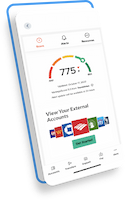There’s no doubt about it—spring has sprung. And along with the influx of warm air and sunshine, springtime is a great time to get focused on financial planning.
After all, with Tax Day right around the corner, a summer full of potential travel plans coming up fast, and the holidays already on the horizon, there are plenty of things to save up for this year. Let’s get ahead of it all by taking a second to do some financial spring cleaning, shall we?
1. Brush up your budget.
Be honest: when’s the last time you sat down with your budget? (You do have a budget, right?)
Whether it’s written on paper or generated by an online financial calculator, like Quontic’s free “How Much Am I Spending” or “Household Cash Flow Tracker” calculators, your budget may become your financial holy text: it tells you how much cash you have to spend in each category after accounting for expenses and sticking to it may help ensure your money doesn’t suddenly disappear on an impulse buy.
That said, it’s important to update your budget from time to time as both your lifestyle and your income change—so if it’s been a while, take a look and see what’s happening. Maybe you could stand to spend less on streaming subscriptions or apps and focus more on your retirement plan, or maybe your family can nix those gym memberships in favor of playing outside. Either way, the only way you’ll know where to make adjustments is to track your spending and create a schema for what that spending should look like!
2. Clear out credit card debt.
One thing’s for sure: Americans, as a whole, are in a lot of debt. On average, each family carries some $155,622 in debt1 between mortgages, student loans and auto loans—not to mention the credit cards that many of us use to help make ends meet.
Unfortunately, because of their high interest rates and daily compounding2, credit cards can lead to a debt spiral in a flash. The money you spend on interest may make it impossible to get ahead of the revolving balance, let alone set any extra cash aside for savings.
The good news, though, is that you may pay off those cards once and for all—it just takes some strategizing and hard work.
One way to do it is debt consolidation: taking out a personal loan large enough to pay off all your cards, simplifying your life (and potentially saving you money) by giving you just one bill to focus on each month. (Of course, for this to work, you’ll need to stop relying on those cards to pay for daily purchases.)
Or, you could tackle it the old fashioned way: with persistence, patience, and elbow grease, paying more than the minimum every month until each card has a balance of $0. Trust us, it’s worth it in the long run!
3. Assess your home for energy-saving potential.
The sun is just getting geared up—which means soon, you may see your energy bills rise thanks to the hard work of your HVAC system. But there are some simple tricks to implement that might help you keep those utility costs nice and low.
For example, black-out curtains could help decrease the impact of the sun’s rays inside your living room, and ceiling fans, which are far cheaper to run than an air conditioning unit, can do a lot to make a room more comfortable. Be sure to keep an eye out for appliances, electronics, and lights that are left on or plugged in when they don’t need to be.
4. Make it automatic.
Saving money is a whole lot less painful when you don’t have to think about it. These days, most banks make it easy to automatically route a portion of each paycheck into your savings account, or round up and save the change from each debit card purchase you make. That way, you don’t have to move the money manually—it basically saves itself.
5. Consider the benefits of saving.
Here’s an idea to consider: what if your money could be fruitful and multiply without any effort on your part, just by sitting in a savings account?
It can! High-yield savings accounts allow you to earn a modest interest rate simply by keeping your cash in the account, all with the added security of FDIC deposit insurance on eligible accounts3.
Here at Quontic, our high-yield savings account offers a 1.70% APY4 on all balances. That’s 21x higher than the national average!5 Interested in learning more about what Quontic has to offer? Our team is standing by to help you find the right savings account for you.
Disclaimer:
1”Amid rising prices, American families fall deeper in debt” by Jessica Dickler https://www.cnbc.com/2022/01/11/amid-rising-prices-us-households-fall-deeper-in-debt.html
2”How is credit card interest calculated?” by Alexandria White https://www.cnbc.com/select/how-to-calculate-credit-card-interest/
3FDIC insurance is applicable to eligible deposit accounts and up to the maximum allowed by law. Learn more at FDIC: Deposit Insurance https://www.fdic.gov/resources/deposit-insurance/
4High Yield Savings Account – $100 to open to account. Rates may change without notice. There is a $10.00 excess transaction fee for every transaction over six for preauthorized withdrawals, automatic or telephonic transfers, checks, drafts, and debit card or similar transactions from your account per account statement cycle. If the account is closed before interest and/or bonus is credited, accrued interest and/or bonus may be forfeited for that statement cycle. Fees could reduce earnings. Ask for details. Additional terms, conditions, fees & exclusions may apply. Information is as of July 8, 2022.
5National Average APY information as of July 8, 2022, according to the FDIC National Rates and Rate Caps.





